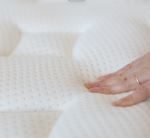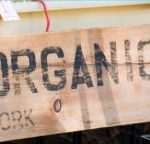Nothing is worse than starting your day off with an allergic episode, especially when you haven’t even gotten out of bed! What’s worse, our allergies can act up when we are asleep, reeking havoc on our airways, nasal passages, and inflaming our throats. Asthmatic reactions can also be set off while we’re asleep, causing the alveoli sacs in our lungs to inflame and make breathing difficult.
The best ways to prevent allergy flare-ups is by keeping your room clean, your sheets and blankets clean, and purchasing a hypoallergenic mattress and pillows. Hypoallergenic materials make the best mattress for allergies and should be your first fix for stopping those morning sneezes. With your health on the line, why wouldn’t you make the investment?
 What does hypoallergenic mean?
What does hypoallergenic mean?
Hypoallergenic literally means “under” or “below normal” allergy. It’s a term that is used for items or animals that are less likely to cause allergic reactions, usually by reducing exposure to certain proteins or chemicals that can cause our immune systems to flare up with a sneeze or make our eyes water and itch. Hypoallergenic pet breeds, for example, are ones that don’t shed their hair, minimizing hair-trigger proteins that can accumulate around your house. For materials, care is taken in their production to avoid allergy-prone chemicals. There are many chemicals in the cosmetic industry known to irritate the skin, such as certain fragrances in body spray, preservatives in lotion, or chemicals in hair dyes.
 What makes a mattress hypoallergenic?
What makes a mattress hypoallergenic?
A hypoallergenic mattress also avoids harsh chemicals on surfaces that could come into contact with your skin or scents that are released into the air. For those with allergies, the best mattress is one that also prevents other biological materials and organisms from settling in. This could be things like mold, fungus, and dust mites that are just itching to dig their way down into your comfy mattress and settle in for the long haul. Great hypoallergenic mattresses also repel other materials, like pet or human hair, from sticking to their surface.
 What are the best materials for hypoallergenic mattresses?
What are the best materials for hypoallergenic mattresses?
The best hypoallergenic mattresses are those with solid-block styles and materials that prevent the accumulation of grit and grime in crevasses. High-density foam mattresses are usually at the top of this list, although other types can be styled to optimize accumulation potential. Air mattresses can also be a great hypoallergenic option since by nature the bulk of the mattress must be closed off to maintain the air chamber. If you’re considering an air mattress, looking for ones with urethane chambers like our Air-Pedic mattresses, since they are fully hypoallergenic enough to be considered a hospital-grade.
Generally speaking, innerspring style mattresses are not sealed as well by design and are not considered hypoallergenic options. If you’re on the market for a new hypoallergenic mattress, we suggest you look at other options first. If you’re in love with your innerspring mattress and aren’t ready to give it up just yet, hypoallergenic covers can be purchased to try to help seal off your mattress from your perpetually scratchy throat.
 What about organic mattresses and other natural materials used?
What about organic mattresses and other natural materials used?
You might think that organic mattresses and other types of mattresses derived from natural components, being of biologic origin, would be a terrible substrate for a hypoallergenic mattress. In reality, organic mattresses are often made from materials that are great allergen suppressors, like bamboo and wood. Rubber and latex are both naturally occurring biological materials that make great clean, repellent surfaces of allergen triggers. Birch is a newer organic mattress material that is naturally hypoallergenic and anti-microbial. Bamboo is also a popular, eco-friendly and hypoallergenic mattress material that would be a great option for those looking to invest in a night of clean breathing. Memory foam can be certified as being low in V.O.C. (Volatile Organic Compounds) off-gassing by outfits such as CertiPur-US and Greenguard, so you can have the peace of mind to know that you are sleeping on something that has been tested safe and requires ongoing re-certification.
 Is there a regulated hypoallergenic mattress label I can look for?
Is there a regulated hypoallergenic mattress label I can look for?
While there are no government agencies enforcing the definition of hypoallergenic on any material or substance in the United States, brands like Air-Pedic make claims that are backed by real science to ensure that the components and the final products they create really are environmentally friendly and non-toxic. Still, allergens are tricky in the sense that they can have a spectrum of induced reaction for any given person, making it difficult to pinpoint an exact quantity that would universally mark being under the allergic reaction radar for all people. For these reasons, it’s important to know the qualities you should look for in your next mattress or pillow to make sure you’ll keep your allergies at bay. Air-Pedic continues to be transparent with their components, as well as only using USA regulated foam and covering materials that have many certifications, so you can rest easy knowing all our products are vetted out as truly hypoallergenic.
Finding the right mattress for you can be challenging, but we hope this guide has helped you envision what the best mattress looks like to keep your allergies away. Nothing is more important than a good night’s sleep!
Sources:
- https://en.wikipedia.org/wiki/Hypoallergenic
- https://www.webmd.com/allergies/chemical-allergies#1
- https://www.furniture.com/mattress/guide/glossary/hypoallergenic
- https://en.wikipedia.org/wiki/Hevea_brasiliensis
- https://www.citrussleep.com/eco-friendly-living/best-organic-eco-friendly-natural-mattresses-you-can-buy-online


 What does hypoallergenic mean?
What does hypoallergenic mean? What makes a mattress hypoallergenic?
What makes a mattress hypoallergenic? What are the best materials for hypoallergenic mattresses?
What are the best materials for hypoallergenic mattresses? What about organic mattresses and other natural materials used?
What about organic mattresses and other natural materials used? Is there a regulated hypoallergenic mattress label I can look for?
Is there a regulated hypoallergenic mattress label I can look for?
Recent Comments